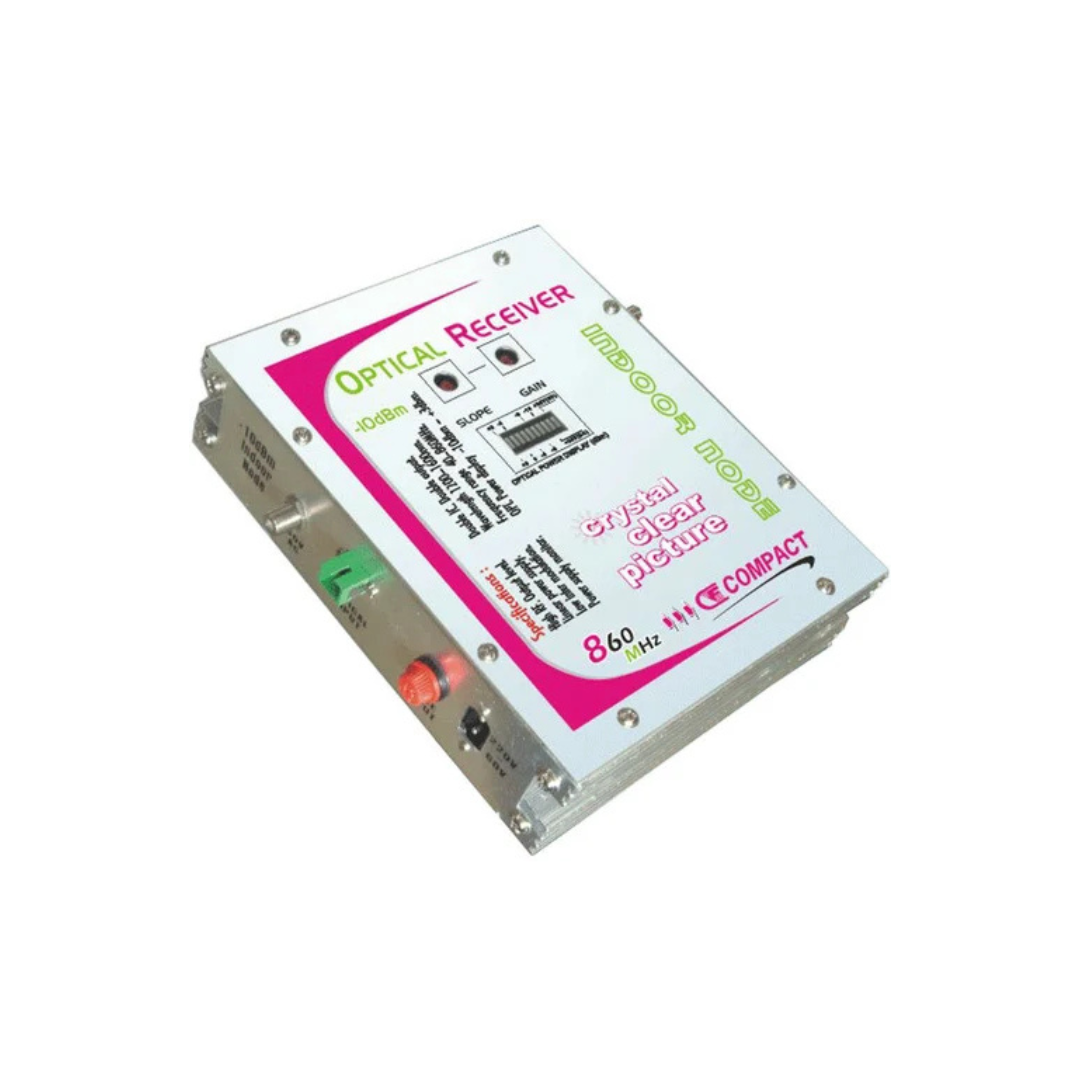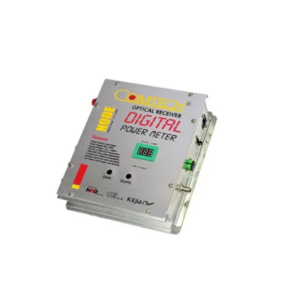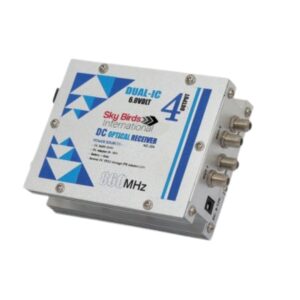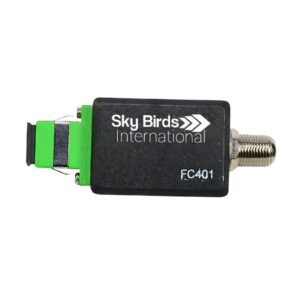Description
Optical Receiver Node – High-Performance Signal Reception for Fiber Networks
An Optical Reciver Node is an essential device in modern cable television (CATV), fiber-to-the-home (FTTH), and hybrid fiber-coaxial (HFC) networks. It plays a pivotal role in converting optical signals into electrical RF (radio frequency) signals, enabling seamless signal distribution across large distances with minimal loss and maximum efficiency. Whether used in broadband internet systems, digital cable TV, or telecommunication networks, the optical receiver node ensures high-quality signal transmission and reception.
What is an Optical Receiver Node?
An Optical Receiver Node is a compact electronic device designed to receive optical signals transmitted through fiber optic cables. These signals typically come from an optical transmitter or headend system and are converted into electrical RF signals suitable for further distribution through coaxial cables. The primary function of the receiver node is to maintain the integrity, quality, and strength of the signal even when distributed to end-users across vast distances.
Optical receiver nodes are available in various configurations, including single-output and multi-output models, and are equipped with gain control, AGC (Automatic Gain Control), test points, and status indicators. They are built to withstand harsh environmental conditions, making them ideal for outdoor and indoor applications.
Key Features of Optical Receiver Nodes
-
High Sensitivity Optical Receiver: Capable of detecting weak optical signals with precision, ensuring reliable signal conversion even at low input power levels.
-
Automatic Gain Control (AGC): Maintains stable output levels by automatically adjusting gain based on input signal strength.
-
Low Noise Figure: Ensures high signal quality and reduces distortion or interference in RF outputs.
-
Wideband Operation: Supports a broad frequency range, typically from 47 MHz to 1000 MHz or more, to handle multiple services like internet, TV, and voice.
-
Excellent Linearity: Offers outstanding performance for both analog and digital signals, essential for high-definition and 4K broadcasting.
-
Weatherproof Housing: Rugged aluminum or weather-sealed enclosures ensure durability in outdoor installations.
-
Power Supply Options: Can be powered through AC or DC sources, with remote powering capabilities for flexibility in network design.
Applications of Optical Receiver Nodes
Optical receiver nodes are widely used in various network environments, such as:
-
CATV Networks: For delivering analog and digital television signals from headend systems to residential subscribers.
-
FTTH Networks: Essential in fiber-to-the-home architectures where high-speed internet, IP TV, and voice services are provided.
-
Broadband Networks: Used in hybrid networks where optical backbone and coaxial last-mile infrastructures are integrated.
-
Campus or Industrial Networks: Ideal for deploying centralized media distribution systems in schools, universities, factories, and large campuses.
Benefits of Using Optical Receiver Nodes
-
Enhanced Signal Quality: Ensures minimal signal degradation, noise, and distortion, even over long transmission distances.
-
Scalability: Easily integrates into existing network infrastructure and supports expansion as network demands grow.
-
Low Maintenance: Robust construction and automated controls reduce the need for frequent maintenance and manual adjustments.
-
Energy Efficient: Designed to consume minimal power, making them suitable for green network deployments.
-
Compact and Versatile: Space-saving designs and multiple mounting options allow for flexible installation in cabinets, walls, or poles.
Choosing the Right Optical Receiver Node
When selecting an optical receiver node for your network, consider the following factors:
-
Optical input power range
-
RF output level and impedance
-
Operating bandwidth
-
Environmental operating conditions
-
Compatibility with your existing network (single-mode/multi-mode fiber, connector type, etc.)
-
Future scalability needs
Conclusion
An Optical Receiver Node is a critical component in any optical network setup. It ensures that high-quality signals are delivered with accuracy, efficiency, and reliability. Whether you are upgrading your existing network or planning a new deployment, choosing a reliable optical receiver node will significantly enhance your network performance and end-user satisfaction.





Reviews
There are no reviews yet.